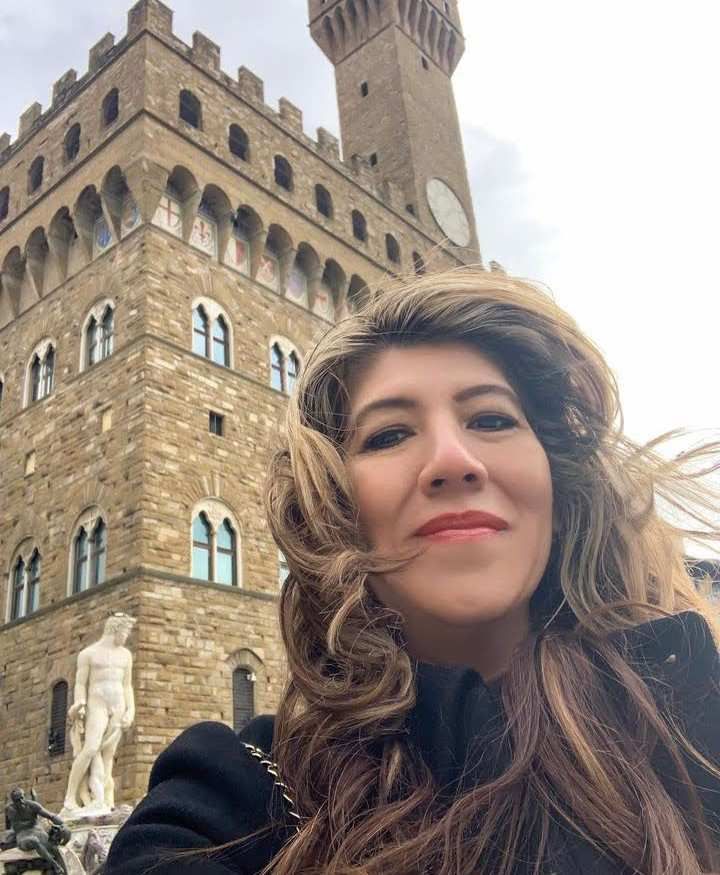
Museo a cielo aperto, Piazza della Signoria è il centro di Firenze, sede del potere cittadino e cuore pulsante della città. Di tipologia L, si trova a sud della Cattedrale di Santa Maria del Fiore e ogni giorno milioni di turisti da tutto il mondo si fermano e ne ammirano felici la bellezza e l'armonia. Il parco è stato teatro di importanti avvenimenti storici e di grandi vittorie, come il ritorno dei Medici nel 1530. Nel 1497 vi fu organizzata la "Pira delle Vanità", promossa dal frate domenicano Girolamo Savonarola, che fece persone. 'qualcosa. questo avrebbe bruciato le piazze, i libri e i quadri “peccato”. Solo un anno dopo, Savonarola fu accusato di eresia e ricorda un monumento in marmo davanti alla Fontana del Nettuno.
An open-air museum, Piazza della Signoria is the center of Florence, the seat of city power and the beating heart of the city. L-shaped, it is located south of the Cathedral of Santa Maria del Fiore and every day millions of tourists from all over the world stop and happily admire its beauty and harmony. The park has been the scene of important historical events and great victories, such as the return of the Medici in 1530. In 1497 the “Vanity Pyre” was organized there, promoted by the Dominican friar Girolamo Savonarola, who made people. 'something. this would burn squares, books and paintings “sin.” Only a year later, Savonarola was accused of heresy and recalls a marble monument in front of the Neptune Fountain.
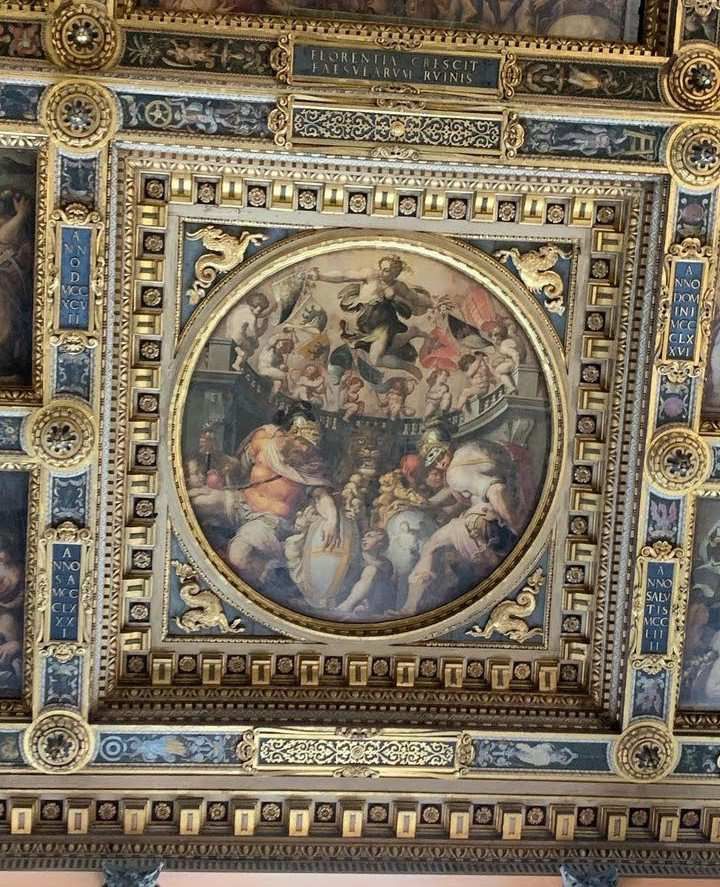
La piazza è dominata dalla sagoma ondulata di Palazzo Vecchio, il miglior collegamento del XIV secolo. Sulla scalinata che porta a Palazzo Vecchio si trovano diverse figure che possono essere descritte in modo simbolico: Marzocco, il leone di Firenze, che tiene in una zampa uno scudo di giglio; una copia di Giuditta e Oloferne di Donatello, simbolo della Repubblica Fiorentina che sta eliminando la tirannia. La statua del David qui raffigurata è un modello in marmo di Michelangelo Buonarroti del 1503 ed è simbolo della vittoria della Repubblica Fiorentina contro tutti i nemici. Ercole rovesciò Caco di Baccio Bandinelli era il simbolo della vittoria dei Medici sui nemici interni.
The square is dominated by the undulating silhouette of Palazzo Vecchio, the best link of the 14th century. On the steps leading up to Palazzo Vecchio are several figures that can be described symbolically: Marzocco, the lion of Florence, holding a fleur-de-lis shield in one paw; a copy of Donatello's Judith and Holofernes, a symbol of the Florentine Republic's eliminating tyranny. The statue of David shown here is a marble model by Michelangelo Buonarroti from 1503 and is a symbol of the Florentine Republic's victory over all enemies. Hercules overthrew Cacus by Baccio Bandinelli was the symbol of the Medici's victory over internal enemies.
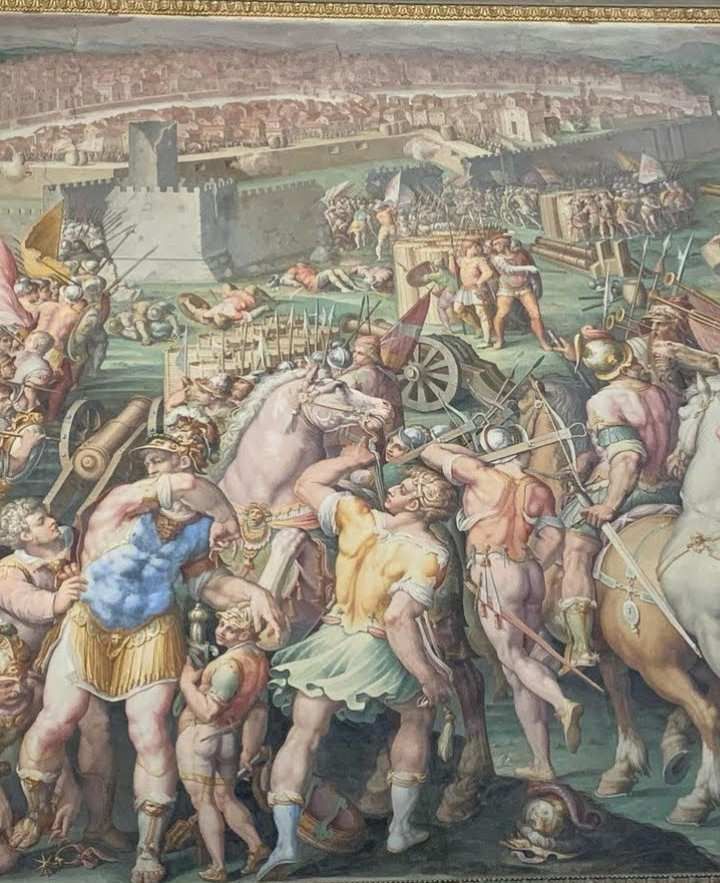
Tra gli altri monumenti della piazza, la Fontana del Nettuno fu realizzata da Baccio Bandinelli su commissione di Cosimo I de' Medici. Al centro della vasca si trova la bellissima statua in marmo del Dio dell'Acqua, scolpita da Bartolomeo Ammannati. Infine, la statua equestre del duca Cosimo I (1595) del Giambologna, bellissimo ritratto di un grande uomo, che riuscì a mettere tutta la Toscana sotto il potere militare dei Medici. Di fronte a Palazzo Vecchio, l'unica Loggia della Signoria, costruita tra il 1376 e il 1381, ha la funzione di balcone per ospitare discorsi in pubblico. Nel 1500 divenne una vetrina per la raffinata scultura. È chiamata anche Loggia dell'Orcagna, che deriva dal nome di Andrea di Cione, detto l'Orcagna, che si ritiene sia l'autore della Loggia, anche della Loggia dei Lanzi, perché all'epoca vi si accampavano i Lanzichenecchi di Alessandro I de' Medici. .
Among the other monuments in the square, the Fountain of Neptune was made by Baccio Bandinelli on commission by Cosimo I de' Medici. In the center of the basin is the beautiful marble statue of the God of Water, sculpted by Bartolomeo Ammannati. Finally, the equestrian statue of Duke Cosimo I (1595) by Giambologna, a beautiful portrait of a great man who succeeded in bringing all of Tuscany under the military power of the Medici. Opposite Palazzo Vecchio, the unique Loggia della Signoria, built between 1376 and 1381, served as a balcony for hosting public speeches. In the 1500s it became a showcase for fine sculpture. It is also called the Loggia dell'Orcagna, which comes from the name of Andrea di Cione, known as l'Orcagna, who is believed to be the author of the Loggia, also the Loggia dei Lanzi, because at the time the Lanzichenecchi of Alessandro I de' Medici were camped there. .
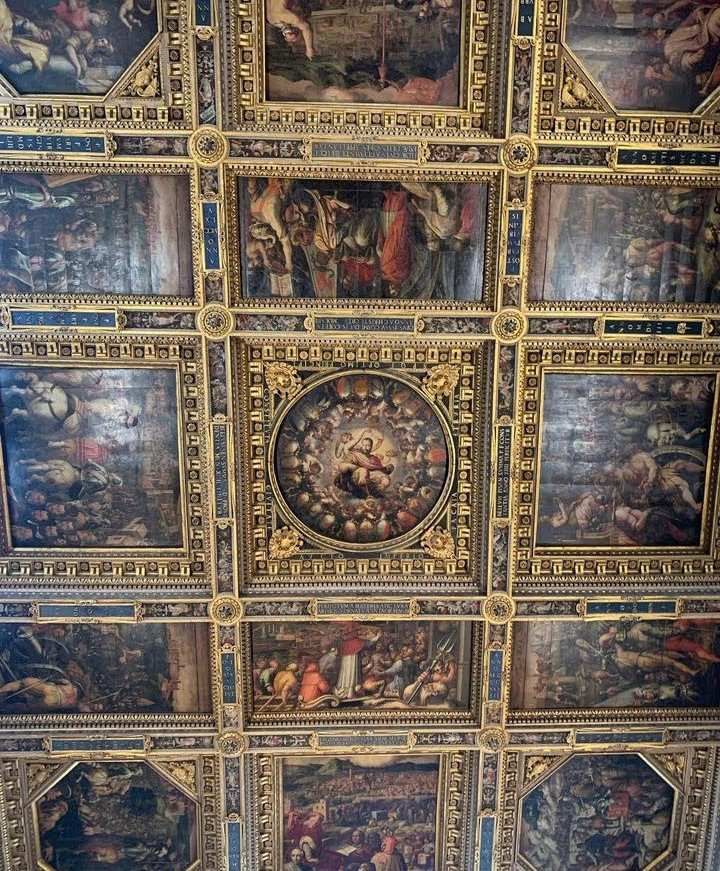
Là. All'esterno presenta tre archi poggianti su colonne e ai lati della scala due "leoni di marmo": uno a destra, opera originale greca e l'altro realizzato da Flaminio Vacca. All'interno si trova "Perseo con la testa di Medusa", gioiello dell'artista e orafo Benvenuto Cellini, che ha ricreato il suo dipinto sul retro dell'elmo di Perseo. Dall'altro lato si può ammirare la "Liberazione delle Sabine", dipinto del Giambologna, che scolpì le tre lettere su un unico blocco di marmo. Proprio dietro la Loggia dei Lanzi si trova la Galleria degli Uffizi, probabilmente la galleria più famosa e visitata d'Italia. Cosa vedere a Firenze.
Abbiamo preparato una lista di cose da vedere a Firenze per godere della sua bellezza in tutta tranquillità. Perché non decidi di trascorrere una giornata a Firenze? Grazie all'incredibile bellezza che offre è considerata la “Città d'Arte”. Tra questi ce ne sono alcuni che vale la pena visitare. Cattedrale di Santa Maria del Fiore
Piazza della Signoria
Palazzo Pitti
There. Outside has three arches resting on columns and on either side of the staircase two “marble lions”: one on the right, an original Greek work, and the other made by Flaminio Vacca. Inside is “Perseus with the Head of Medusa,” a jewel of the artist and goldsmith Benvenuto Cellini, who recreated his painting on the back of Perseus' helmet. On the other side is the “Liberation of the Sabine Women,” a painting by Giambologna, who carved the three letters on a single block of marble. Just behind the Loggia dei Lanzi is the Uffizi Gallery, probably the most famous and visited gallery in Italy. What to see in Florence.
We have prepared a list of things to see in Florence to enjoy its beauty at leisure. Why not decide to spend a day in Florence? Thanks to the incredible beauty it offers, it is considered the “City of Art.” Among them are some worth visiting. Cathedral of Santa Maria del Fiore
Piazza della Signoria
Pitti Palace

ora andiamo insieme alla scoperta di bruciato vivo in Piazza della Signoria, come rel luogo più straordinario della Cattedrale di Santa Maria del Fiore a Firenze!
È il simbolo di Firenze sin dalla sua costruzione nel 1436.
La prima cosa che attrae di questa cattedrale è la sua magnificenza, infatti, nonostante sia un blocco diverso, utilizzando lo stesso materiale e colore per l'esterno si ha l'impressione di trovarsi di fronte ad un blocco unico e gigantesco. L'interno è molto elegante e semplice, anche se il grande vetro italiano crea un meraviglioso effetto di luce e colore. Inoltre, è ricco di mosaici e immagini bibliche dipinte e scolpite da artisti come Donatello, Lorenzo Ghiberti e Paolo Uccello.
now let's go together to discover burned alive in Piazza della Signoria, as rel place more extraordinary than the Cathedral of Santa Maria del Fiore in Florence!
It has been the symbol of Florence since its construction in 1436.
The first thing that attracts you about this cathedral is its magnificence, in fact, although it is a different block, using the same material and color for the exterior you have the impression that you are in front of a single, gigantic block. The interior is very elegant and simple, although the large Italian glass creates a wonderful effect of light and color. It is also rich in mosaics and biblical images painted and sculpted by artists such as Donatello, Lorenzo Ghiberti, and Paolo Uccello.

Ovviamente una delle parti più notevoli è la grande cupola del Brunelleschi. All'interno è decorata con affreschi rappresentanti il Giudizio Universale, mentre all'esterno appare "magnifica e grandiosa" grazie alla disposizione dei mattoni a forma di chevron. Sapevate che molte leggende si sono create nel corso dei secoli attorno alla storia della costruzione della cupola di Santa Maria del Fiore? Si racconta infatti che quando Brunelleschi ricevette l'ordine di costruire la cupola, lui in un primo momento rifiutò, incoraggiando i committenti ad organizzare un concorso che ebbe così inizio.Trovandolo in forma e corretto, ha corso e ha vinto sia il titolo che la tappa.
Of course, one of the most remarkable parts is Brunelleschi's great dome. On the inside it is decorated with frescoes depicting the Last Judgment, while on the outside it appears “magnificent and grand” due to the chevron-shaped arrangement of the bricks. Did you know that many legends have been created over the centuries around the story of the construction of the dome of Santa Maria del Fiore? In fact, it is said that when Brunelleschi was ordered to build the dome, he at first refused, encouraging the principals to hold a competition, which thus began.Finding it fit and correct, he ran and won both the title and the stage.

Piazza della Signoria
Piazza della Signoria è la piazza principale di Firenze e il centro della vita sociale dei fiorentini. La "L" è circondata e decorata da bellissimi edifici, come Palazzo Vecchio e la Loggia della Signoria, un grande edificio della fine del XIV secolo, e da grandi statue. Tra le statue che qui possono interessare, "Marzocco" e "Giuditta e Oloferne", di Donatello, "Perseo", realizzata da Benvenuto Cellini, "Testa di Nettuno" realizzata da Bartolomeo Ammannati e "Statua del Cavaliere di Cosimo". Io del Giambologna. Una curiosità che sorprende tutti è che la fontana che possiamo ammirare oggi, alla quale si riunivano uomini e donne fin dall'antichità, fungeva da stabilimento balneare nel XVI secolo e fu oggetto di distruzione il 25 gennaio 1580. Nel 1592 qui la ringhiera fu posta per impedire agli animali di utilizzarlo come abbeveratoio nella Dogana di Palazzo Vecchio. È proprio per questo motivo che dietro la fontana del Nettuno è possibile trovare scritti dal 1500 al 1800 che vietano di lavare i panni e di inquinare la fontana.
Signoria Square
Piazza della Signoria is Florence's main square and the center of Florentines' social life. The “L” is surrounded and decorated by beautiful buildings, such as Palazzo Vecchio and the Loggia della Signoria, a large building from the late 14th century, and large statues. Statues of interest here include “Marzocco” and “Judith and Holofernes,” by Donatello, “Perseus,” made by Benvenuto Cellini, “Head of Neptune” made by Bartolomeo Ammannati, and “Statue of the Knight of Cosimo. I by Giambologna. A curiosity that surprises everyone is that the fountain we can admire today, at which men and women have gathered since ancient times, served as a bathhouse in the 16th century and was subject to destruction on January 25, 1580. In 1592 the railing was placed here to prevent animals from using it as a watering hole in the Customs House of the Palazzo Vecchio. It is for this very reason that behind the Neptune Fountain you can find writings from 1500 to 1800 forbidding washing clothes and polluting the fountain.

Palazzo Pitti
Palazzo Pitti è un antico edificio rinascimentale risalente al 1458. Il palazzo, dopo essere stato prima il banco di Luca Pitti, poi dei Medici ed infine dei Savoia, oggi ospita il Museo Nazionale.
Al suo interno è possibile visitare la Galleria Palatina, l'ex palazzo, il Museo d'Arte Moderna e il Museo della Moda e del Costume, oltre ad una serie di altre gallerie d'arte uniche. In effetti, Palazzo Pitti rappresenta un'altra opera d'arte, grazie alla sua bellissima architettura e agli spettacolari affreschi al suo interno.
Pitti Palace
Palazzo Pitti is an ancient Renaissance building dating back to 1458. The palace, after first being the bank of Luca Pitti, then the Medici and finally the Savoy family, now houses the National Museum.
Inside you can visit the Galleria Palatina, the former palace, the Museum of Modern Art and the Museum of Fashion and Costume, as well as a number of other unique art galleries. In fact, Palazzo Pitti represents another work of art, thanks to its beautiful architecture and spectacular frescoes inside.

Chiesa di Santa Maria Novella
La magnifica e imponente chiesa di Santa Maria Novella sorge nell'omonima piazza ed è considerata fin dall'antichità punto di riferimento della confraternita dei frati domenicani. La facciata è ricoperta di marmo in stile più rinascimentale, con qualche influenza gotica. Queste sono oggi presenti soprattutto nella chiesa, dove si possono ammirare le grandi aperture fisse e le numerose vetrate colorate. Cose da fare a Firenze - Programma Slow Active Tours
Una volta scoperte le meraviglie nascoste delle strade del centro storico di Firenze, è il momento di immergersi nei suoni, negli odori e nelle ombre della Cupola di Santa Maria del Fiore. Per questo abbiamo preparato una lista di cose da fare a Firenze che non ti perderai!
Church of Santa Maria Novella
The magnificent and imposing church of Santa Maria Novella stands in the square of the same name and has been considered a landmark of the confraternity of Dominican friars since ancient times. The facade is covered with marble in a more Renaissance style, with some Gothic influences. These are mainly present today in the church, where large fixed openings and numerous stained glass windows can be admired. Things to do in Florence - Slow Active Tours Program.
Once you've discovered the hidden wonders of the streets of Florence's historic center, it's time to immerse yourself in the sounds, smells and shadows of the Dome of Santa Maria del Fiore. That's why we have prepared a list of things to do in Florence that you won't want to miss!
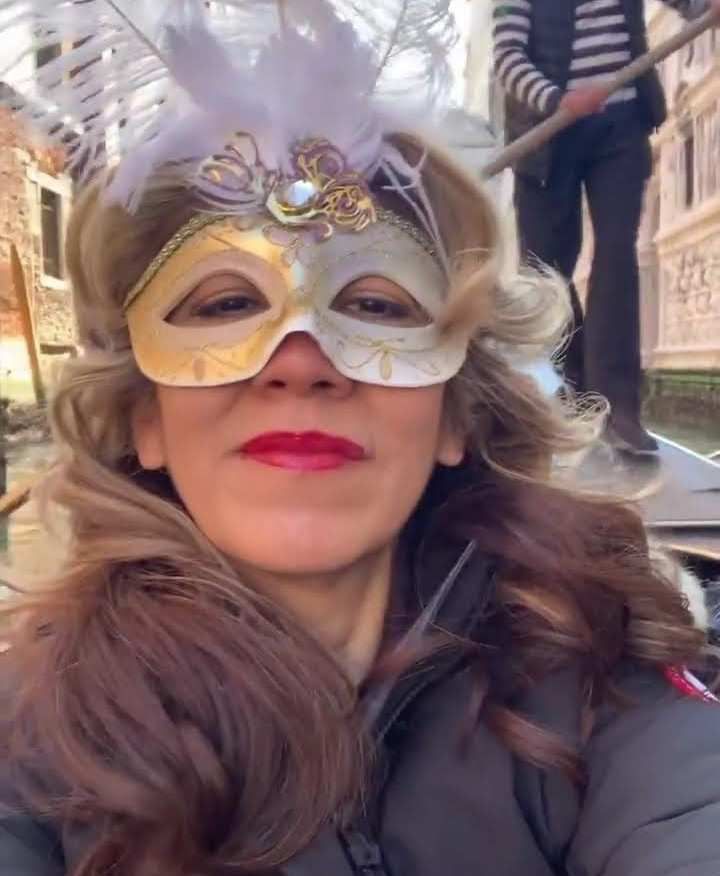
La Galleria degli Uffizi
La Galleria degli Uffizi è uno dei musei più importanti al mondo per numero e qualità delle opere collezionate. Potrai ammirare alcune delle opere più importanti dell'arte italiana, opere di grandi artisti come Giotto, Caravaggio, Leonardo da Vinci, Tiziano e Bronzino, oltre alla più grande collezione dei grandi Raffaello e Botticelli. La maggior parte delle opere esistenti provengono dalla collezione dei Medici, grandi cultori e promotori di un'arte incredibile. Le opere sono disposte in ordine cronologico, per dare un'idea dell'origine dell'arte in questo meraviglioso Paese.
Ciò che molti non sanno è che la Sindrome di Stendhal, detta anche “Sindrome di Firenze”, ha avuto il suo primo caso in questo museo. Il famoso scrittore Stendhal, naturalmente, circondato da tanta bellezza artistica, cominciò ad avvertire tachicardia, disagio e disagio, fino a raggiungere una certa estasi.
The Uffizi Gallery
The Uffizi Gallery is one of the most important museums in the world in terms of the number and quality of works collected. You can admire some of the most important works of Italian art, works by great artists such as Giotto, Caravaggio, Leonardo da Vinci, Titian and Bronzino, as well as the largest collection of the great Raphael and Botticelli. Most of the extant works come from the collection of the Medici, great devotees and promoters of incredible art. The works are arranged in chronological order to give an idea of the origin of art in this wonderful country.
What many people do not know is that the Stendhal Syndrome, also known as the “Florence Syndrome,” had its first case in this museum. The famous writer Stendhal, of course, surrounded by so much artistic beauty, began to experience tachycardia, uneasiness and discomfort, until he reached a certain ecstasy.

Vestiti vecchi
Una volta arrivati a Firenze, passeggiare tra le vie storiche e gli splendidi palazzi diventa quasi d'obbligo. In questo modo potrai goderti tutta la bellezza che la città ha da offrire.
Camminando raggiungerete il Ponte Vecchio, simbolo della città, che attraversa il fiume Arno. Il ponte è stato dichiarato patrimonio artistico nazionale per la sua bellezza e popolarità che attira ogni giorno tantissime persone che vi transitano.
La particolarità di questo ponte è che, nonostante i tanti disastri che hanno colpito la città, rimane permanente. Si racconta infatti che anche Hitler, rimasto stupito dalla bellezza del Ponte Vecchio, decise di non sganciare la bomba.
Old clothes
Once you arrive in Florence, walking through the historic streets and beautiful palaces becomes almost a must. This way you can enjoy all the beauty the city has to offer.
As you walk you will reach the Ponte Vecchio, the symbol of the city, which spans the Arno River. The bridge has been declared a national artistic heritage because of its beauty and popularity, which attracts so many people passing through it every day.
What is special about this bridge is that despite the many disasters that have struck the city, it remains permanent. In fact, it is said that even Hitler, who was amazed by the beauty of the Ponte Vecchio, decided not to drop the bomb.
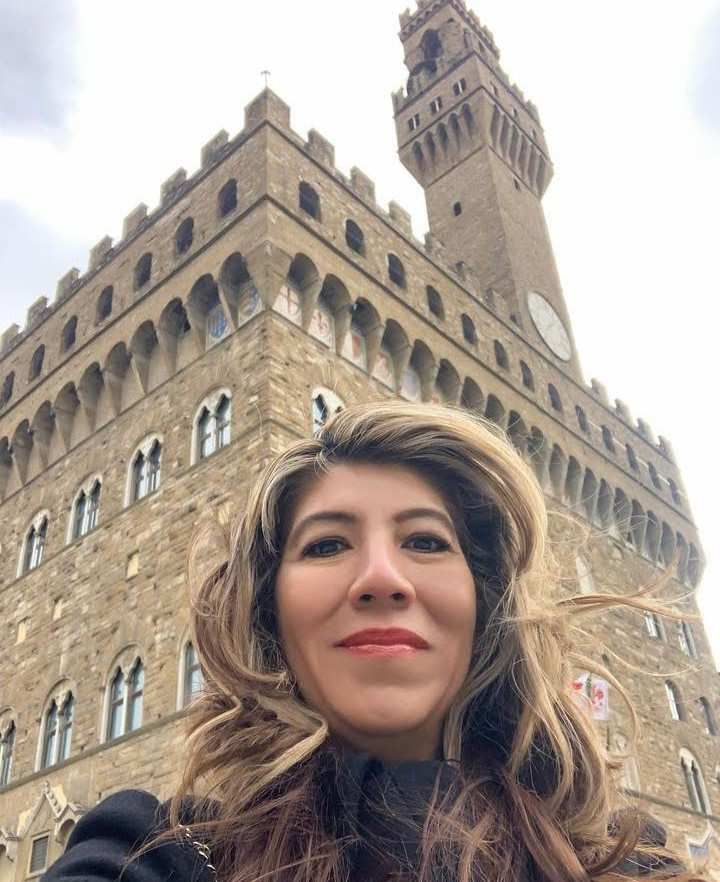
Un museo
Tra i meravigliosi musei della città non possiamo dimenticare il bosco dell'Accademia. Questa, in particolare, conserva alcune delle opere più importanti di Michelangelo, tra cui l'originale David.
All'interno del Museo è possibile visitare anche il Museo degli Strumenti Musicali che conserva ed espone gli strumenti più importanti provenienti dal Conservatorio Luigi Cherubini di Firenze.
A museum
Among the city's wonderful museums, we cannot forget the Accademia woods. This one, in particular, preserves some of Michelangelo's most important works, including the original David.
Inside the museum you can also visit the Museum of Musical Instruments, which preserves and displays the most important instruments from the Luigi Cherubini Conservatory of Florence.